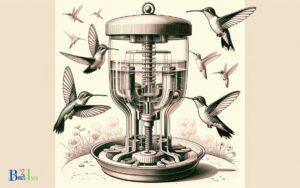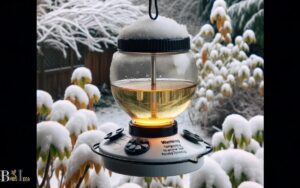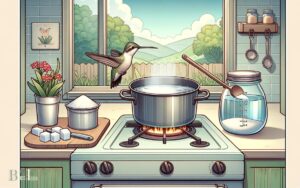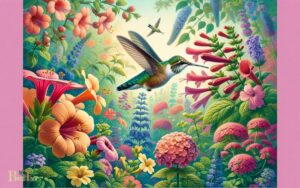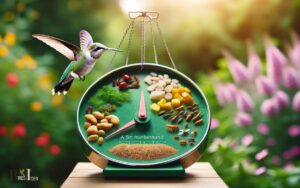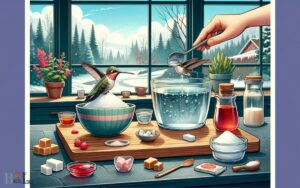Is Hummingbird And Oriole Food The Same? Not The Same!
Hummingbird and oriole food are not the same; each bird has specific dietary needs that cater to their unique metabolism and nutritional requirements.
Hummingbirds primarily feed on nectar that is high in sugar content, which provides the fast energy they need for their high metabolism.
Oriole food, on the other hand, includes nectar but they also require a diet that includes fruit and insects.
Here are some key differences:
Choosing the right food and feeder type is essential for attracting the particular bird species you desire to your garden.
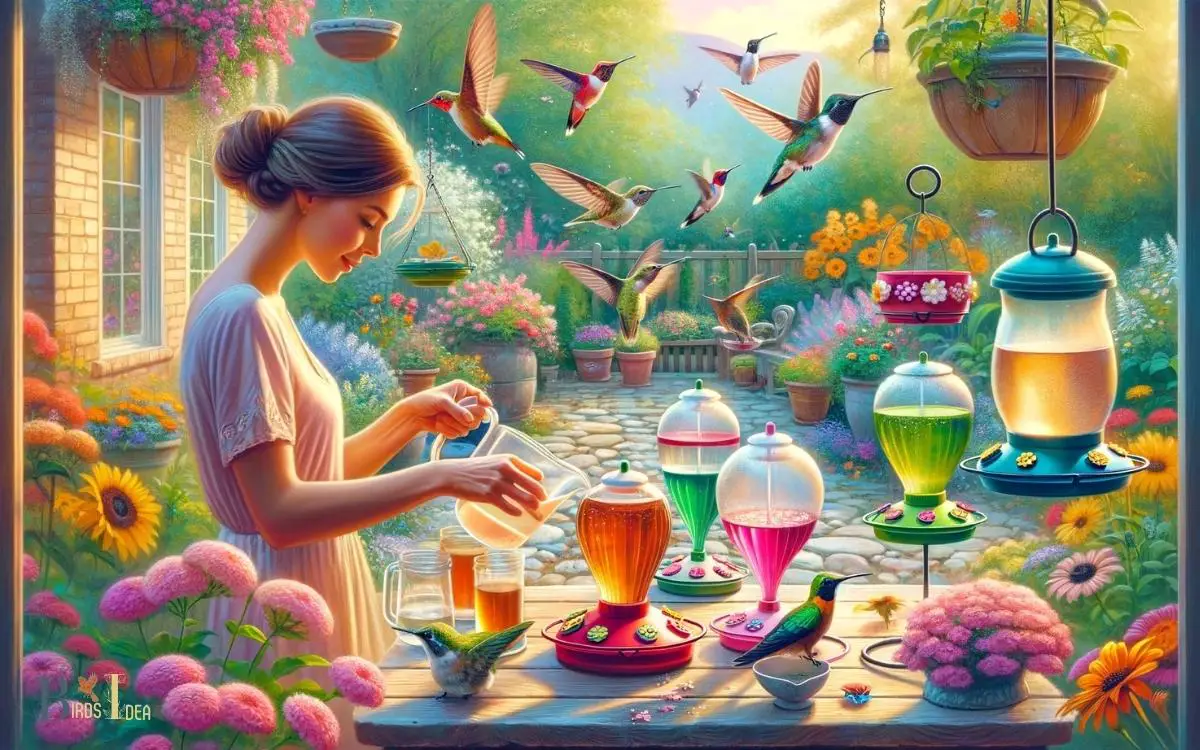
Key Takeaway
Dietary Preferences of Hummingbirds
Hummingbirds primarily prefer a diet consisting of nectar from flowers, which provides them with the necessary energy and nutrients for their high metabolism.
This nectar is a rich source of sucrose, providing the quick energy these small birds require for their rapid wingbeats.
In addition to nectar, hummingbirds also consume small insects and spiders, which supplement their diet with protein and essential nutrients such as amino acids, vitamins, and minerals.
The high sugar content of nectar sustains their fast-paced lifestyle, while the insects offer vital elements for their overall health and development.
Understanding the dietary preferences of hummingbirds is crucial for those who seek to provide suitable feeding options for these remarkable birds, ensuring they receive the necessary nutrients to thrive and contribute to the ecosystem.
Dietary Preferences of Orioles
Orioles primarily favor a diet that includes nectar, fruits, and insects, which provide them with essential nutrients and energy for their daily activities. This diverse diet allows orioles to thrive and maintain their health.
When it comes to nectar, orioles are particularly drawn to the sweet nectar found in flowers such as trumpet vines and fruit tree blossoms.
Orioles are known to have a penchant for fruits such as oranges, berries, and grapes, which they consume both for sustenance and hydration.
Insects also play a crucial role in the oriole’s diet, as they are a vital source of protein and other essential nutrients.
Orioles are adept at catching insects like caterpillars, beetles, and spiders, which further supplement their dietary needs.
Hummingbird Vs Oriole Nectar Composition
To cater to the specific dietary needs of orioles, the nectar composition for these birds typically includes water for hydration, sugar as an energy source, and fruit juices such as cherry, orange, or grape to provide additional nutrients and flavors.
Unlike hummingbirds, orioles are more attracted to nectar with a lower sugar concentration, around 15-20%.
This is because they primarily feed on insects and fruit, and their nectar needs are secondary.
Orioles also require a source of protein, which they primarily obtain from insects. Therefore, it’s beneficial to offer orioles a nectar solution with added fruit juices or even protein supplements.
Understanding the specific nectar composition for orioles is essential for attracting and serving these beautiful birds in a way that aligns with their dietary requirements and preferences.
Tips for Attracting Both Hummingbirds and Orioles
Diverse Plant Selection
- Nectar-Rich Flowers: Choose flowers with high nectar production, such as bee balm, salvia, and trumpet vine, appealing to both hummingbirds and orioles.
- Fruit-Bearing Plants: Incorporate trees and shrubs that bear fruits like oranges, berries, and cherries to attract orioles.
Proper Feeder Placement
- Strategic Locations: Position feeders at different heights to accommodate the varied feeding styles of hummingbirds and orioles.
- Sunlight Exposure: Ensure feeders receive adequate sunlight for nectar stimulation and to attract insects, a vital food source.
Maintain Clean Feeders
- Regular Cleaning: Clean feeders at least twice a week to prevent the growth of harmful molds and bacteria, ensuring the health of both bird species.
- Fresh Nectar: Replace nectar regularly, especially in warmer weather, to prevent spoilage and fermentation.
Offering Protein Sources
- Insect-Friendly Garden: Cultivate an insect-friendly garden with plants that attract insects, meeting the protein needs of both hummingbirds and orioles.
- Fruit Options: Provide overripe fruits like bananas or peaches to attract fruit-loving orioles.
Water Features
- Birdbaths: Install birdbaths with shallow water, offering a refreshing spot for both hummingbirds and orioles to drink and bathe.
- Misting Systems: Consider misting systems to create water droplets that hummingbirds enjoy flying through.
Seasonal Considerations
- Year-Round Planning: Plan your garden to provide resources throughout the year, considering migration patterns and seasonal changes.
- Winter Feeding: Offer supplemental food during winter when natural food sources may be scarce.
Can Bees Also Eat Oriole Food?
Can bees consume hummingbird nectar? While bees are primarily attracted to flowers, their preference for sugary substances means they might also be interested in hummingbird feeders. However, it is important to note that oriole food and hummingbird nectar are not the same. Bees consuming hummingbird nectar can be a common occurrence, but providing specific oriole food can help attract these beautiful birds to your yard without unintentionally feeding unwanted guests.
Best Practices for Nourishing Both Species
To effectively nourish both hummingbirds and orioles, it is important to provide a diverse range of nectar sources and supplemental foods.
This ensures that both species receive the necessary nutrients for their specific dietary needs.
Here are some best practices to consider:
Nectar Sources:
- Plant a variety of nectar-producing flowers such as trumpet vine, bee balm, and salvia to attract both hummingbirds and orioles to your garden.
- Hang multiple nectar feeders in different areas to accommodate the feeding habits of both species.
Supplemental Foods:
- Offer orioles fruit pieces such as oranges, grape jelly, and chopped apples to provide essential vitamins and minerals.
- Provide protein-rich mealworms or ants for orioles, while offering a sugar-water solution with a higher concentration for hummingbirds during migration.
Conclusion
While hummingbirds and orioles may have some dietary preferences in common, their nectar compositions and feeding habits differ.
To nourish both species in your garden, it is important to provide a variety of nectar sources and feeders that cater to their specific needs.
By creating a diverse and welcoming environment, you can attract these beautiful birds to your garden and enjoy the sight of their vibrant colors and graceful movements.

